🎶Just🎶
How New Rap Artists
Advanced In Hi$tory!
1619 ~ 2019
The story of how Hip Hop's history
was born and how it helped to shape
black culture through history.

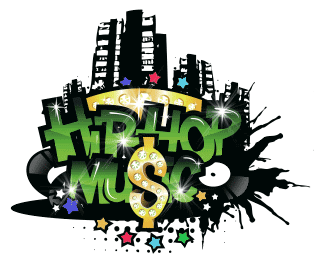

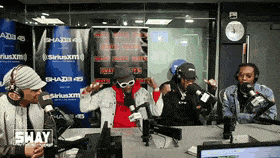
New Rap Culture

Hip Hop's Hi$tory
Updated 6/19/2023
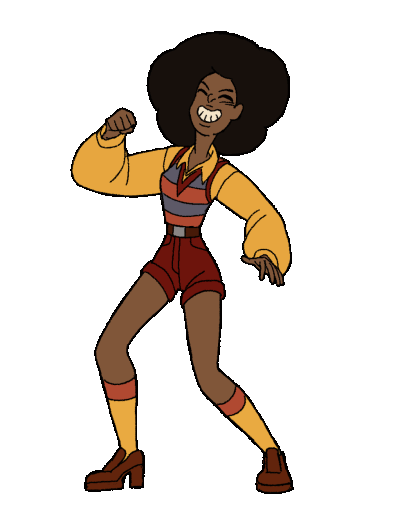
Hip Hop Artists today can blow up overnight and see $$$ like never before but the traditional rapper has come a long way from it's original roots in history. Long before the empires that a rap career and it's opportunities of great fortune would morph into today, it's past form was the result of an actual struggle. It was used as a tool during a dark time in history for survival as a cryptic form of communication during the early slave days and it still continues to endure in many shapes and reputations today. We will take a brief trip through Hip-Hop and raps beginnings and document some of the key points that made Rapping a phenominal practice that has impacted a billion dollar industry and multi-cultures around the world. Music reputation would be a traditionl anchor that would stand the test of time and become a practice we would term The Hip Hop Nation, among many attributes.

In 1619, Dutch traders brought 20 African slaves
taken from a Spanish ship to Jamestown
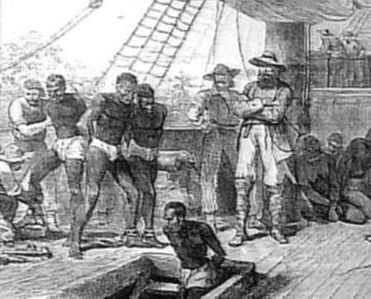
The griot tradition or reputation carried Overeas
The griot tradition or reputation carried overseas when Africans were captured against their will and transported to America to be forced into slavery and is a practice seated in the pain of the Black-American experience which began with slavery. While slaves were enslaved on the farms and plantations, they would generally sing. Words of the songs they performed were called "call and solution" or "call to answer" selections. One specific leader would call out the main music line and the remaining slaves would reply with a solution or answer to the previous line.The story teller tradition stood the test of time and it's acceptance ranges in many forms and styles with today's rap artist churning out hit followings with every thought-provoking rap line. The beat truly does go on. Whilst the audio technology progressed, so did the artwork of rapping. hip hop Freestyle rapping is one popular kind of technique whereby Rap artsits spit out lyrics spontaneously. This is also favored by rapping duels when 2 rappers move head-to-head and try to prime one another in producing the very New Rap Culture.

Hip Hop's History 1920's - 1930's "Breakdancing"
Dance was an integral part of daily life among African American slaves. Observations of slave culture, particularly on the Southern plantation, yield evidence of a layering of traditional African tribal dance practices shared, blended, and reinvented in the New World. For this reason, dance practices among African American slaves represent a narrative of resistance and survival. American history records ,"Dancing was encouraged for economic reasons; slaves who had been exercised looked better and brought a higher price" Noting the physiological benefits of exercise, slaves owners forced slaves to exercise to maintain their health. 1925: Earl Tucker (aka Snake Hips), a performer at the Cotton Club. invents a dance style similar to today's hip-hop moves. He incorporates floats and slides into his moves. Similar moves would later inspire an element of hip-hop culture known as breakdancing. Breaking, also called breakdancing or b-boying/b-girling, is an athletic style of street dance. While diverse in the amount of variation available in the dance, breakdancing mainly consists of four kinds of movement: toprock, downrock, power moves and freezes. Breakdancing is one of the four elements of hip-hop.
Hip Hop's History 1940's "The Booming Sound System"
1940: Tom the Great (a.k.a. Thomas Wong) uses a booming sound system to delight his audience. Tom the Great Sebastian was an early Jamaican sound system started by Tom Wong in 1950, named for a trapeze performer in Barnum and Bailey's circus. The group has been called "the all-time giant of sound systems" and helped launch several notable artists. Wong also utilizes hip American records to steal music-lovers from competitors and local bands. The first sound clash was between Tom The Great Sebastian and Count Nick in 1952. Tom was the winner."Toasting was developed by the sound-system operators," writes Mohair Slim. "To emphasis the music's rhythm, the DJ's chanted staccato noises over the top of the instrumental tracks that were the staple of the early dancehall. A common Duke Reid's"technique" was the rapid-fire repetition of words, like "ska-ska-ska" or "get-up-get-up-get-up" also employed were locomotive-noises ("ch-ch, ch-ch, ch-ch"), hiccups ("he-da, he-da, he-da") and grunts. Prince Buster, Coxsone Dodd and Byron Lee all utilised toasting to accentuate the fervour of their records.
Hip Hop's History 1950's An Expressway To The Bronx
1950: The Soundclash contest between Coxsone Dodd's "Downbeat" and Duke Reid's "Trojan" gives birth to the concept of DJ battling. 1956: Clive Campbell is born in Kingston, Jamaica. (Campbell would later become the father of what we now know as hip-hop.) 1959: Parks Commissioner Robert Moses starts building an expressway in the Bronx. Consequently, middle-class Germans, Irish, Italians, and Jewish, neighborhoods gradually disappear. Businesses relocate away from the borough only to be replaced by impoverished African-American and Hispanic families. Along with the poor came addiction, crime, and unemployment.
Hip Hop's History 1960's The Early Inspirations
1962: James Brown records Live At The Apollo. Brown's breakbeat. The breakbeat would later inspire the b-boy movement, as breakers danced to these beats at block parties. 1965: In a historic boxing bout, Muhammad Ali (born Cassius Clay) defeats Sonny Liston in the 6th round. Before the contest, however, Ali recites one of the earliest known rhymes. Clay comes out to meet Liston And Liston starts to retreat If Liston goes back any further He'll end up in a ringside seat. Clay swings with a left, Clay swings with a right, Look at young Cassius Carry the fight. Liston keeps backing But there's not enough room It's a matter of time... 1967: Clive Campbell migrates to the United States at the age of 11. Because of his imposing size, kids at Alfred E. Smith High School nickname him Hercules. He would later become a graf writer and change his name to Kool Herc. 1968: A gang named Savage Seven would hit the streets of the East Bronx. Savage Seven later changes its name to Black Spades, before eventually becoming an organization known as the Zulu Nation. The Universal Zulu Nation is an international hip hop awareness group formed and formerly headed by hip hop artist Afrika Bambaataa. They strongly promote that Hip-Hop was created to provide 'peace, love, unity and having fun' for those in the ghetto, and eventually onward to all those supportive of the culture. 1969: James Brown records two songs that would further influence the drum programming in today's rap music "Sex Machine" with John Starks playing drums and "Funky Drummer" with Clyde Stubblefield on the drums.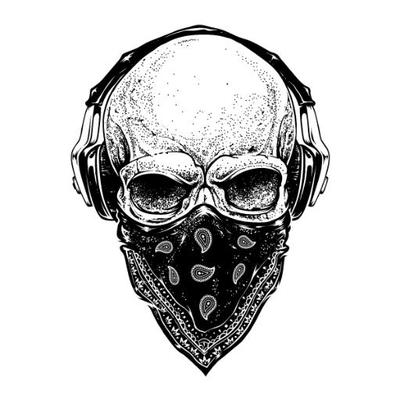
Hip Hop's History 1970's And The First Hip Hop Beef
The best hip hop acts of the 1970's would give birth to the Ghetto Brothers. Grand Wizzard Theodore, The Sugarhill Gang, Kurtis Blow and DJ Kool Herc just to mention a few. In the 1970s, an underground urban movement known as "hip hop" began to form in the Bronx, New York City. It focused on emceeing (or MCing) over house parties and neighborhood block party events, held outdoors. The 4 elements of Hip Hop were Bboying, Graffiti, DJing, Beatboxing and they spun off new dance moves that helped to turn Hip Hop into a national phenomenon. The first hip hop record is widely regarded to be The Sugarhill Gang's "Rapper's Delight", from 1979. However, much controversy surrounds this assertion as some regard "King Tim III (Personality Jock)" by The Fatback Band, which was released a few weeks before "Rapper's Delight", as a rap record. This issue may have also been the first event shadowed as the term "Hip Hop Beef" and would be seen as an occupational hazard of the business of rapping.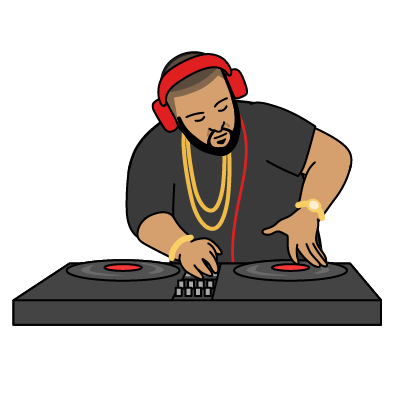
History is about to be made 1973 With The "Disc Jockey"
On August 11, 1973 in the Bronx, New York history was about to be made. DJ Kool Herc (now known as the first DJ & founding father of hip hop) is a Jamaican-American Disc Jockey (aka Clive Campbell) who is credited with helping originate hip hop music in The Bronx, New York City, in the 1970's through his innovation (aka new idea) called "Back to School Jam", hosted on August 11, 1973 at 1520 Sedgwick Avenue with his sister Cindy Campbell, became inspired to earn extra cash for back-to-school clothes, she decided to have her older brother, then 16 years old, play music for the neighborhood in their apartment building. They began hosting back to school parties in the recreation room of their building. It was these gatherings that would spark the beginning of a new culture we know today as Hip-Hop.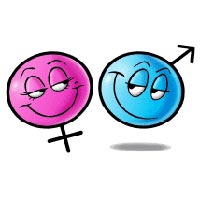
Hip Hop's History 1980's Hood Rap vs More Diversification
in the 1980s, kurtis Blow was the first rapper to appear on national television, releasing "the breaks" on Mercury Rewards, sells more than a million copies. Since the 1980's developed thug or so called hood rap tracks that were introduced first to the young rap community. Quickly they turned equally popular with older audiances and much more complicated. In the 1990's, rap audio transformed considerably with the introduction of gangsta rap. Although the gangsta rap songs had so far included some boasting and violence, a gangsta's reputation or street credit needed that lyrical idea to step up to a new level. Gangsta reputation made some fans question the quality among those who claimed it and saw that it often perpetuated bad generalizations of black metropolitan guys and women with violent intent. Various other prominent Djs of Hip Hop consist of Grandmaster Flash, Mr. Miracle, DJ Jazzy Jeff, DJ Scrape from EPMD, Dj Premier coming from Gang Starr, DJ Scott Los Angeles Stone from Dance Down Productions, dj pete rock of Pete Rock & CLIST Soft, DJ Muggs coming from Cypress Hill, Bind Expert Jay coming from Run-DMC, Eric B., DJ Screw coming from the Screwed Up Click on and also the founder of the Chopped & Screwed design of combining music, Funkmaster Flex, Tony Touch, DJ Hint, and also DJ Q-Bert along with many others.In 1985, Salt N Pepa and American Hip-Hop Trio from Queens, New York make their first appearance on Super Nature's "The Show Stopper." They become the first female hip-hop trio Cheryl James, Sandra Denton and Latoya Hanson produced songs such as "shake your thang" and "push it". A fresh rap artist must have consistency. Uniformity is simply mistaken for large frequency. Consistency is actually the notion of establishing a volume structure, whether it is a combination tape once a week or once per year, and sticking with it. What really affects rappers is a protracted hiatus. Building traction is really a hard job, and if that job is achieved, being to bold or arrogant about it is regarded as the absolute most counter-productive shift that an artist may make.
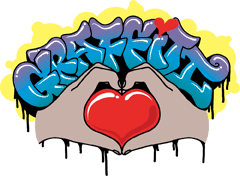
In the early 80's, we begin to see more diversification of Hip Hop. Electronica and even rock music made its way onto hip-hop "records. The Beastie Boy's album License to Ill" is a prime example of how hip-hop and rock fused together in the 80s. The early 80s also brought a huge advancement in production with the debut of the 808 kickdrum. The Roland TR-808 Rhythm Composer, commonly known as the 808, which is a drum machine manufactured by the Roland Corporation between 1980 and 1983. It was one of the first drum machines to allow users to program rhythms instead of using preset patterns. As we approached the mid-80s, we entered the "Golden Age" of hip-hop characterized by influence and diversity. Notabley, Run-DMC emerged as a hip-hop trio who' s self titled album was the first to go gold in the genre. Also LL Cool J arrived on the scene as the first solo rap artists. The label "Hip Hop" is stated to have actually been coined through Keith "Cowboy" Wiggins. Wiggins was a member of Grandmaster Flash and also the Fuming 5, a Hip-Hip team created in 1978 in the South Bronx. They were a sizable portion of the genre's early advancement. Other musicians claiming the starting point of Hip-Hop consist of The The Sugarhill Gang (Englewood, NJ) Michael "Wonder Mike" Wright Guy "Master Gee" O'Brien Henry "Hen Dogg" Williams. Signed by Sylvia Robinson, they have actually been acknowledged as the first hit rap group. Their song, "Rapper's Delight," is still prominent today. The very first female group to produce a Hip Hop single was actually referred to as The Sequence, from Columbia, South Carolina, which wasn't one of the most fertile lands for hip-hop MCs at the time. The group consisted of Cheryl (The Pearl) Cook, Gwendolyn (Blondie) Chisolm, and Angie (Angie B.) Brownstone, and after hearing The Sugarhill Gang's "Rapper's Delight" on the radio/, the girls took a chance trip to New Jersey to audition for Sylvia Robinson's newly created Sugar Hill Records.launching "Funk You Up" in 1979. Other preferred female performer's from the very early times of Hip-Hop feature Salt N Pepa, MC Lyte (born Lana Michelle Moorer) is an American rapper who first gained fame in the late 1980's, becoming the first solo female rapper to release a full album with 1988's critically acclaimed "Lyte as a Rock". She has long been considered one of hip-hop's pioneer feminists. Other female artists on the move inculuded Queen Latifah, as well as Oaktown 357. Grandmaster Flash and Furious 5, is often known as the greatest Hip-Hop song of all times. In 1984, DEF JAM records is formed by Russel Simmons.

Hip Hop's History 1990's And The Hip Hop Global Rapper's
in 1990, Tupac joins digital underground as a dancer and roadie. The success of hip-hop in the 90's was mostly due to MC Hammer's multi-platinum album Please Hammer", Don't Hurt 'Em released in 1990. Soon after, hip-hop began to get more mainstream success with rappers such as Vanilla Ice and Puff Daddy. It was also in this time period that Hip-Hop and RnB spread internationally to places like Europe and Asia. Top albums in the 90s included Dr. Dre's breakthrough album "The Chronic" that brought a G-funk twist into hip-hop music. Also, Wu-Tang Clan's "Enter the Wu-Tang" debuted in 1993 followed by Nas's most popular album, Illmatic released in 1994. Also in 1994, Tupac is shot 5 times and robbed in a New York recording studio. 2Pac: "I recovered, and I was sentenced to prison for 8 months."While the flow and beat of rap audio is essential to their fundamental design, the main effectiveness of reputation audio is in it's lyrics. Rap tunes often can utilize the same pre-recorded music, nevertheless the huge differences is in the lyrics of the song that makes them stand out from one another. The power is the lyrics of the tracks that make the reputation as well as the audio truly unique.
Many people thought that the content claims about attributes of the lyrics did a great deal to mold our world; thus change our culture whether it be worsen, impair, deteriorate or improve ie: Twerking. Regulations are often mentioned for music censorship. Some also believe that reputation censorship is wrong; you can find cases, songs, and reports to prove them. Many individuals genuinely believe that reputation audio stimulates violence and that it is unfavorable to the society. While there may be some examples showing where the bad after effects of some rap music has occurd, there is little acknowledgment of rap's valuable ethnic contribution in addition to social activism.
Fact reputation (aka art) should not be censored since everyone has the right with their flexibility of speech, because it is in Part 2 of Charter of Rights and Freedoms of Canada. Artists express thoughts and the planet is after them. The view that "art is imitation (representation)" has not only been challenged, it has been moribund in at least some of the arts since the 19th century. It was subsequently replaced by the theory that art is expression. Instead of reflecting states of the external world, art is held to reflect the inner state of the artist. As mentioned by male and female artists, it's flexibility of choice, and that's correctly what America is supposed to be about. It seems that things just workout in the incorrect order.
For Canada, censoring rap is unlawful. Artists have every appropriated freedom to speak and represent themselves in in whatsoever way they like. Rap music has been good to the listening public as well as scorned by American society. Reputation through music has been useful knowledge to people about black culture and how it evolved over time. People generally learn what is a bad thing about rap culture and it's music through the mass media. They haven't focused on what good it does or how it inspires and sometimes motivates positive actions by it's listening audiances.

Hip Hop's Return To Africa The Global Irony
Rapping and Hip Hop music culture is a tradition that was carried to the new world in the 1600's. History has come full circle, and rap music and Hip Hop culture are now being re-created in Africa by youth all over the the Continent. Young artist have taken rap's current day manifestations and added a new modern day twist of their own. And just to add to the irony, the word "hip" has been linked to the Wolof word "hepi" or "hipi" which means "to see" or "to open one's eyes". Several scholars debate whether the word "hip" is actually derived from Wolof or whether its usage is simply a coincidence. Today Hip hop music and Rap culture landed back in Africa between the 1980s and early 1990's. Since then it has spread with the energy and passion as it did in America in the beginning of western hip hop in the 70's creating a musical and cultural revolution. The frustration, anger, poverty, joy, and spirit which young African American rappers expressed transformed the minds of millions of African youth, who related to the messages and stories being told.In Summary

Rap has taken on a demographic profile many music genre can not claim today, except for jazz and maybe rocks claim to immortality. That unique profile would include the ability to reach such a totally abundant and random type of individuals comprising of the highest E.L.I.T.E college students to the hardest streets of the largest cities and smallest of suburban neighborhoods. Hip-Hop and rap has found a link to many people, clothing, footwear and corporate industries and has also found it's place on many movie screens with no sign of disappearing any time soon. Many strongly believe that the genre could be viewed as a way of living, considered that it likewise has resulted in new techniques of suiting up, its very own technique of speaking, as well as its own special outlook on social, political, efficient as well as mental elements. Hip Hop and rap is a part of history and will be a part of an unknown future in music fame and headline infamy for many more years to come.

Since the 1970's, Hip Hop has increased world wide to become globally allowed as a fine art form (although banned in some countries). Starting with Dj Kool Herc and a couple of turn tables in the Bronx, Hip Hop is now some of the most popular and also commercial genres of popular music on the marketplace today. Rapping, emceeing, damage dancing, graffiti and trump punching have actually all grown coming from their origins of Hip Hop, yet still continue to be firmly connected. Some dispute that what it is Hip Hop today does not possess the exact same real emotion as when it began, which holds true in some cases, but nearly all styles evolve gradually. The capitalism possesses lead to the movement to drop a number of its own initial social worth of liberty and demonstration. It is actually just an issue of what you personally believe to express what Hip Hop and rap truly is.
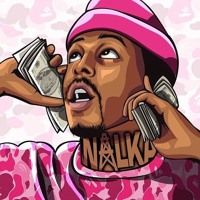
Reputation Music And It's Consequences
Reputation is actually the most effective form of artistic offering to audio tracks these days. Reputation has presented some people with a new feeling of pride and a whole new type of motivational artistic expression. Rap has brought black children and white children closer together. Some would say because of Hip Hop and rap, white children are becoming knowledgeable of black cultures through their favorite tracks and some also have (in some cases) developed a new respect for black culture and dance which may help to shape a more progressive country for the future someday.A Hip Hop Moment In History 1998 Photo Shoot
September 29th, 1998 - XXL Photo-shoot with photographer and filmmaker Gordon Parks (director of Shaft), starring over two hundred old and new school hip hop artists (many of which are legends). The picture (below) graced the cover of the December '98 issue of XXL Magazine. Taken place at 17 E 126th St. in Harlem, to pay tribute to the fortieth anniversary of the August 1958 "Great Day in Harlem" photograph of fifty seven jazz artists, taken by Art Kane, shot at/in the same location (and featured in the January '59 issue of Esquire Magazine).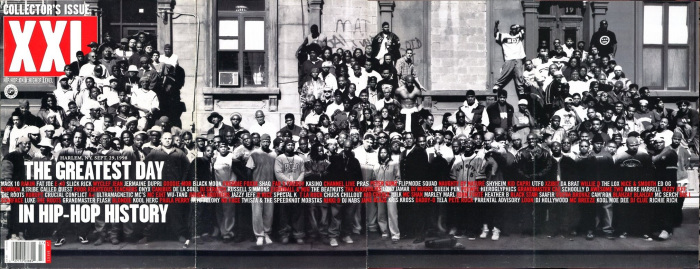
Author - Ninjacoder58
Hip-Hop Songs of the 2000's The Billboards and The Charts
The popularity of hip hop music continued through the 2000s. Dr. Dre remained an important figure, and in the year 2000 produced, The Marshall Mathers LP by Eminem. Dre also produced 50 Cent, 2003 album 'Get Rich or Die trying' which debuted at number one on the U.S. Billboard 200 charts. Hip hop also found their way increasingly into mainstream pop during this period mainly the mid-2000's, as the Los Angeles style of the 1990s lost power. Nelly's debut LP, Country Grammar, sold over nine million copies. In the 2000's, crunk music, a derivative of Southern hip hop, gained considerable popularity via the likes of Lil Jon and the Ying Yang Twins. Jay-Z represented the cultural triumph of hip hop. As his career progressed, he went from performing artist to label president, head of a clothing line, club owner, and market consultant-along the way breaking Elvis Presley's record for most number one albums on the Billboard magazine charts by a solo artist and aka a billionaire, even though it's by combining his worth with his wife. Jay-Z's net worth of $900 million, with both together, Beyonce and Jay-Z come out at a whopping $1.255 billion. He's worked with some of the best hip-hop artists of all time, and sold his brand 'Beats By Dr. Dre' to Apple a couple of years ago for $3 billion! In 2019, Dr. Dre's net worth is estimated to be $850 million, which makes him the 2nd richest rapper in the world. In the middle of the 2004 Vibe Awards ceremony, a man named Jimmy James Johnson rap approaches legend Dr. Dre, who was preparing to receive a Lifetime Achievement Award, and punches him in the face. A full-on brawl ensues during which Johnson gets stabbed.Top 60 Hip-Hop Songs of the 2000's
Joelle Choquette - Time to reminisce about the good old hip-hop times, when autotune hadn't destroyed most of the tunes just yet, when 50 Cent had number one hit songs on the Billboard hot 100, when Miley Cyrus wasn't trying to be the most gangsta women on the block and Missy Eliott was still the coolest chick in town, when milkshake were bringing boys to the yard and nobody knew Kanye West was a loud-mouthed douchebag just yet, but most of all that time when we used to "Get Low" and party like "It's Yur Birthday" every time we had a chance to. These are the 60 best hip-hop songs from the first decade of the 21rst century -so basically from 2000 to 2010!
Hip Hop's Most intellectual (aka smartest) Rappers
Hip Hop also caters to an elite class of musical artist who mostly inspire followers with a positive message. Some rappers run on traditional rap and some would describe themselves as poets of "The Spoken Word Rappers". Poetry can be written or spoken. ... Spoken word is the live performance of a poem. In other words, all spoken word is poetry, but not all poetry is spoken word.Most Intellectual Rappers 2019
Despite being in the mainstream consciousness for over twenty years now, Hip-Hop is still largely thought to consist solely of idiotic, crude and often pointlessly violent lyrics that debase and malign the English language. Although to be fair, that is still the majority of the Hip-Hop music being shoved down our throats by the big music labels and radio. However, there is an increasingly large presence of extremely intelligent Andre 3000 From OutKast, Slug From Atmosphere, Kool Keith, lupe Fiasco, Eyedea, From Eyedea & Abilities, El-P, Sage Francis and Saul Williams went the distance in acadamia.Rappers With College Degrees 2019:
Young MC, University of Southern California, Childish Gambino, New York University, Talib Kweli, New York University, Yasiin Bey aka Mos Def, New York University, Guru (Gang Starr), Morehouse College, J. Cole, St. John's University, David Banner, Southern University, Common, Florida AM University, Flavor Flav, Adelphi University, Cam'ron, Texas JUCO, 2 Chainz, University of Alabama State, Kanye West, Chicago State University, Chuck D, Adelphi University and Sage Francis, University of Rhode Island.Let's Create For A Better Future.

Page Hits/Views!
Thank You!
New Rap Culture Blog: Copy
https://is.gd/ZVkBCc

Copy to Phone


 |  | 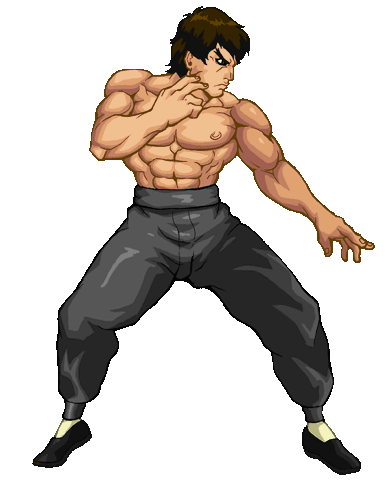 |
|---|---|---|
 |  | 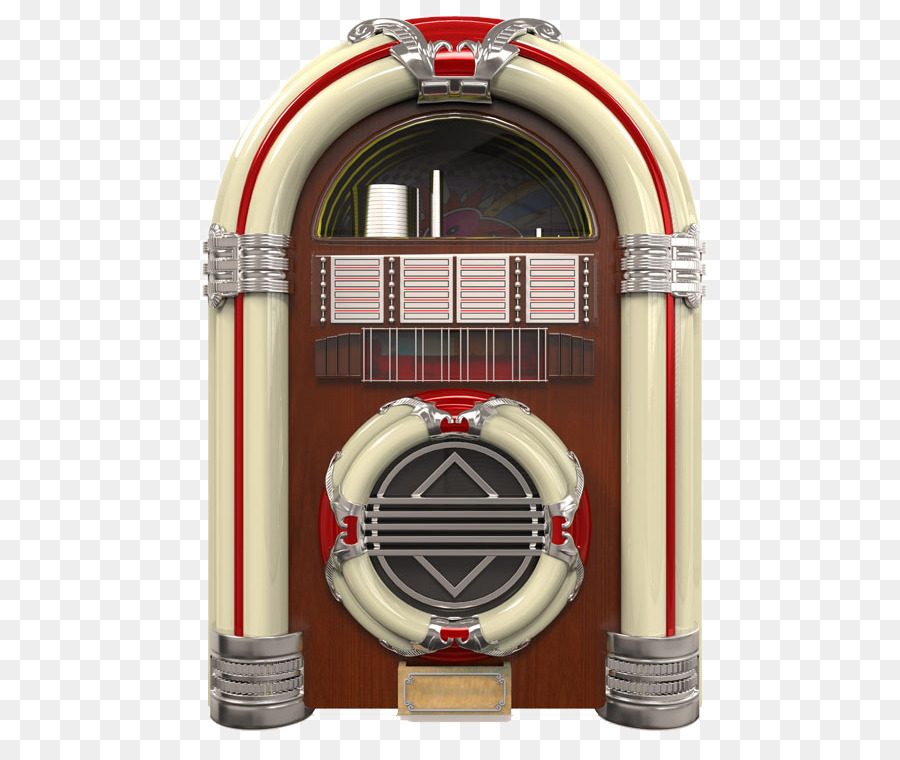 |
📢HOT NEW HIP HOP NEWS📢
 Coming Soon - Become One (Interactive Noise Remix)
Coming Soon - Become One (Interactive Noise Remix)


.png)


END
Copyright © 2024 - 2025 NC58 Network All Rights Reserved.